Algeria << al JEER ee uh >> is the largest country in Africa.

Northern Algeria stretches along the Mediterranean Sea. The country’s narrow Mediterranean region has a warm climate and rich farmland. Almost all Algerians live in this region. Algiers, the country’s capital and largest city, lies on the Mediterranean. To the south, the sun-scorched wastes of the Sahara cover more than four-fifths of Algeria. Beneath the surface of this desert area lie huge deposits of natural gas and petroleum.
Most Algerians are of mixed Arab and Berber descent. However, the people form two distinct cultural groups—Arab and Berber. Each group has its own customs and language. But nearly all Algerians are Muslims—that is, followers of Islam.
For about 130 years, Algeria belonged to France. In 1962, it gained independence following a bloody revolution. Algerians then formed a socialist government that began a program of rapid industrial development. The program has been financed chiefly by income from Algeria’s government-owned natural gas and petroleum industries. But industry has not grown fast enough to eliminate poverty and widespread unemployment.
Government
National government.
Algeria’s first constitution was adopted in 1963. Since then, the constitution has been revised several times. In 2020, voters approved a new constitution that was adopted in 2021.
A president serves as Algeria’s head of state. The president is elected by the people to a five-year term. The president appoints a prime minister to head the government. The prime minister, in turn, nominates a cabinet called the Council of Ministers, which is then appointed by the president. The Council of Ministers helps in carrying out the day-to-day operations of the government.

Algeria has two houses in its national legislature, the National People’s Assembly and the Council of the Nation. The people elect the members of the National People’s Assembly to five-year terms. The members of the Council of the Nation serve six-year terms. Two-thirds of the members of the council are elected from representatives of local assemblies. The president appoints the other one-third.
Loading the player...Algeria's national anthem
Until 1989, the Front de Liberation Nationale (FLN), or National Liberation Front, was Algeria’s only legally permitted party. Today, Algeria is a multiparty state. However, the Constitution bans the formation of political parties based on race, religion, language, sex, or regional differences. Other important political parties in Algeria today besides the FLN include the Movement of Society for Peace and the National Democratic Rally.
Local government.
Algeria has 58 provinces called wilayas. Each wilaya has an elected assembly and a wali (governor), who is appointed by the president.
Courts.
The Supreme Court is Algeria’s highest court. It reviews cases from 58 wilaya courts. Wilaya courts hear appeals from lower courts called tribunals.
Armed forces.
Algeria has an army, air force, and navy. Military service is required for Algerian men.
People
Ancestry.
Most of Algeria’s people are of mixed Arab and Berber ancestry. Berbers lived in what is now Algeria at least 5,000 years ago. Arabs began to arrive from the Arabian Peninsula during the A.D. 600’s. Through the years, so many Arabs and Berbers intermarried that it is now difficult to separate the groups by ancestry. However, many Berbers in the country still maintain their own language and culture. Less than 1 percent of the people are of European descent.

Language.
A large majority of Algerians speak Arabic, the country’s official language and one of its two national languages. In addition to Arabic, many Algerians speak French. About a fifth of the people speak dialects of the Berber language, Tamazight, which is Algeria’s other national language.
Way of life.
Since Algeria gained its independence from France in 1962, the government has worked to rid the country of French cultural influences. For example, it requires that legal proceedings be in Arabic rather than French. Arabic has also replaced French as the language used to teach the country’s elementary and high school students. Many Algerians have called for stricter observance of Islamic teachings, which regulate family and community relationships and many other aspects of daily life.
Rural life.
Rural Algerians typically live in large family groups made up of several generations. Most houses are built of stone or concrete or of sun-dried bricks made of mud and straw. Most also have flat tile or tin roofs. The majority of rural Algerians make a living raising livestock or farming small plots.
City life.
The architecture of Algeria’s larger cities reflects Islamic and European influences. Mosques (Islamic houses of worship) and open-air markets are common. Older sections of the cities are called casbahs. In these sections, shops and houses are crowded along narrow streets. Newer sections have broad boulevards and tall office and apartment buildings. 
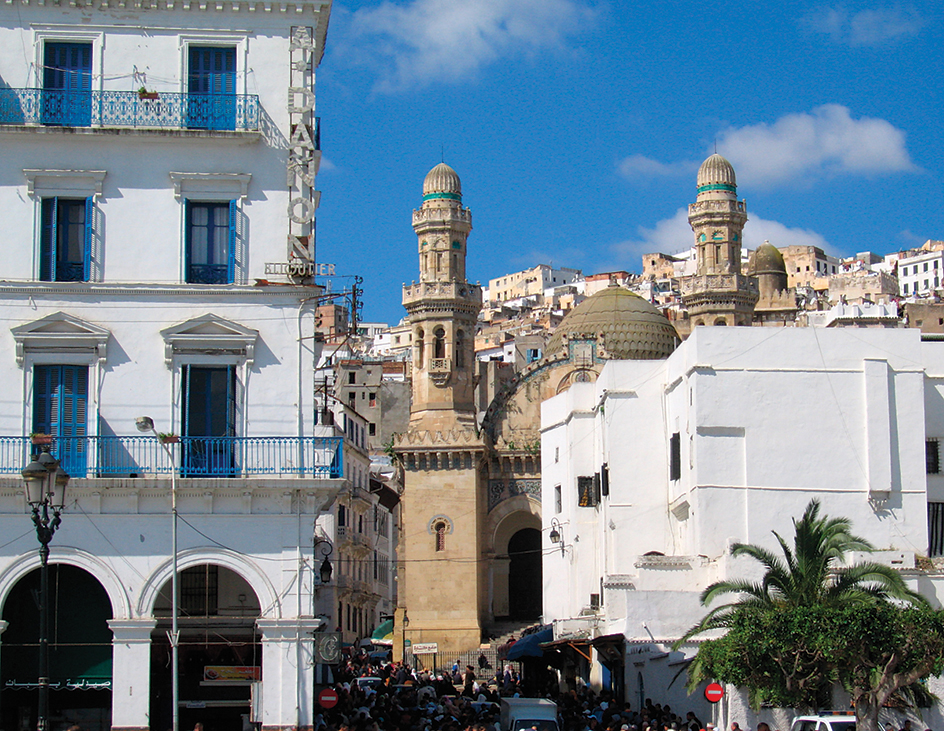
In Algeria’s cities, many men work in factories or offices. The typical household consists of only a father and mother and their children. City people have much more contact with Western ideas than do rural Algerians. As a result, some city dwellers follow Western customs.
Since Algeria gained independence, many poor rural people have moved to cities to seek factory work. But many of them have not been able to find jobs. The migration and a severe housing shortage have resulted in the growth of large slums in many Algerian cities.
Clothing.
Many Algerians, especially in rural areas, wear traditional clothing. A woman may wear a long, white cotton outer garment called a haik. It covers the head and the lower part of the face and extends down as far as the feet. Traditional clothing for men includes a long, hooded cloak called a burnoose. Many people in urban areas wear clothing similar to that worn by North Americans and Europeans.
Foods
made from such grains as wheat and barley form the chief part of the diet of most Algerians. The national dish is couscous. It consists of steamed wheat served with meat, vegetables, and a souplike sauce. Many city dwellers eat dishes similar to those eaten by North Americans and Europeans.
Recreation.
Soccer is the most popular sport in Algeria. Many Algerians enjoy playing the game or watching soccer matches. A favorite pastime in cities is going to motion pictures. Algerians celebrate several national holidays, including their country’s independence day on July 5. They also enjoy a number of religious festivals.
Religion.
The Constitution of Algeria declares Islam to be the country’s official religion. About 99 percent of the people are Muslims, but they do not all agree about the role that Islam should play in the country’s political and social life.
Education.
About 80 percent of Algerians aged 15 or older can read and write. For Algeria’s literacy rate, see Literacy (table: Literacy rates for selected countries). Algerian law requires all children from 6 to 15 years old to attend school. More than 90 percent of all children attend elementary school. However, only about a third of them go on to high school. The University of Algiers is the country’s largest university. 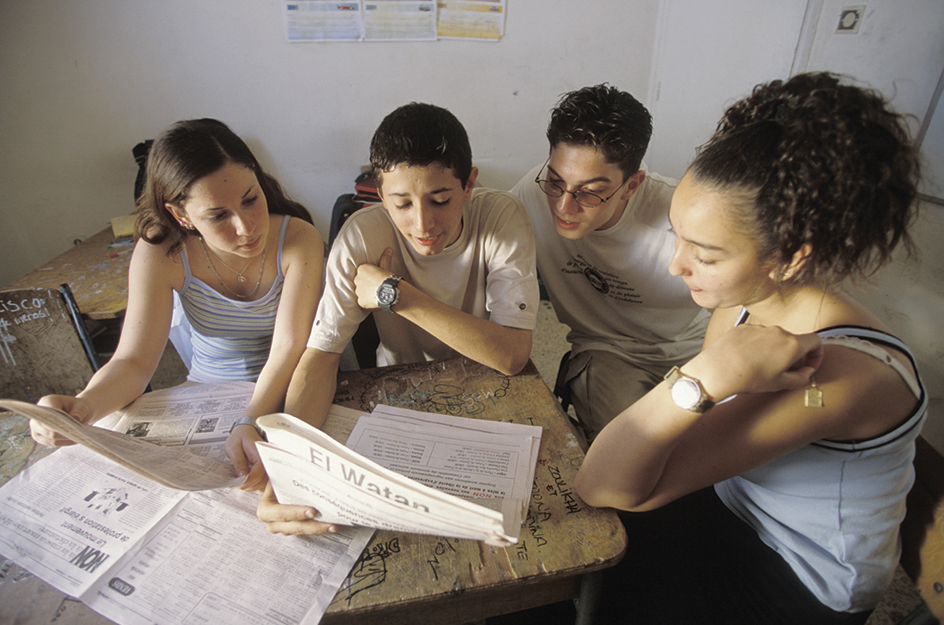
The arts.
A large number of Algeria’s finest works of art reflect the influence of Islam. Outstanding examples include the beautiful domed mosques found throughout the country. Algerians are also known for their superb jewelry, pottery, rugs, and other handicrafts in which they use distinct Islamic designs and traditional techniques.
Algerian painters and writers were strongly influenced by French culture during the period when Algeria belonged to France. Since then, they have increasingly drawn upon their Arabic, Berber, and Islamic cultural roots. Today, many Algerian painters use traditional Arabic or Berber designs. Numerous Algerian authors now write novels and plays in Arabic instead of in French.
The land and climate
Algeria has three major land regions. They are, from north to south: (1) the Tell, (2) the High Plateaus, and (3) the Sahara.
The Tell
stretches about 750 miles (1,200 kilometers) along the Mediterranean coast. The region is from about 80 to 200 miles (130 to 320 kilometers) wide. It consists chiefly of coastal plains and gently rolling hills. The word Tell is an Arabic term meaning hill. Much of Algeria’s best farmland lies in the western and central parts of the region. Rugged mountains cover most of the eastern Tell. Many Aleppo pine, juniper, and cork oak trees grow on the mountain slopes. The Tell Atlas Mountains rise along the region’s southern edge. Over 90 percent of Algeria’s people live in the Tell.
Near the sea, temperatures in the Tell average 77 °F (25 °C) in summer and 52 °F (11 °C) in winter. Annual rainfall averages 16 inches (41 centimeters) in the west and 27 inches (69 centimeters) in the east.
The High Plateaus
lie south of the Tell Atlas Mountains and range from about 1,300 to 4,300 feet (400 to 1,300 meters) above sea level. Herders graze cattle, sheep, and goats on the grasses and shrubs that cover much of the region. During rainy periods, shallow salt lakes called chotts form on the plateaus. About 7 percent of the Algerian people live in the region.
Average temperatures on the High Plateaus range from 81 °F (27 °C) in summer to 41 °F (5 °C) in winter. The region receives less than 16 inches (41 centimeters) of rain a year.
The Sahara.
The Saharan Atlas Mountains form the northern border of the Algerian Sahara. This vast desert region occupies more than 80 percent of the country. Sand dunes cover much of the northern Sahara. Other parts of the region consist of bare rock, boulders, and stones. A wealth of natural gas and oil lies under the eastern part of the wasteland. In the southeast, the Ahaggar Mountains tower above the desert floor. The range includes Algeria’s highest peak, Mount Tahat, which rises 9,573 feet (2,918 meters) above sea level.
Daytime temperatures in the Algerian Sahara sometimes soar above 120 °F (49 °C). During the summer, a very hot, dusty wind called the sirocco blows northward across the region. The sirocco parches the High Plateaus about 40 days each summer and the Tell about 20 days.
Less than 3 percent of all Algerians live in the Sahara. Many of the region’s people live in oases and rely on underground springs to water such crops as dates and grains. Nomads travel between grazing areas with their camels, sheep, and other livestock.
Economy
Algeria’s economy is largely controlled by the state. The country’s economy is based largely on income from natural gas and petroleum production.
Service industries
account for about half of the total value of Algeria’s economic production and employ about three-fifths of the nation’s workers. These industries include education, finance, government, health services, and wholesale and retail trade.
Mining
employs only a small percentage of the nation’s workers, but it accounts for much of Algeria’s economic production. Algeria produces large quantities of natural gas and petroleum, chiefly from fields in the northeastern part of the Sahara region. Other important minerals produced in Algeria include gold, iron ore, phosphate rock, and zinc.
Manufacturing and construction
also account for much of Algeria’s economic production. They employ about 30 percent of all workers. The nation’s chief manufactured products include construction materials, iron and steel, liquid natural gas, motor vehicles, and refined petroleum products. Almost all Algerian factories are on or near the coast in such cities as Algiers, Annaba, Arzew, Constantine, and Skikda.
The government has poured much money into the construction of factories. But the industries have not grown fast enough to provide jobs for all workers. Thus, Algeria has a high rate of unemployment, and many Algerians work in foreign countries.
Agriculture
provides a living for about one-tenth of Algeria’s workers. Most of the country’s farmers own small plots on which they produce enough to feed their families. Other farmers work on large government farms. Algeria has a small amount of arable land and must import much of its food.
Crops are mainly grown in the northern area near the Mediterranean Sea. Grains, especially wheat and barley, are important crops. Other crops include citrus fruits, dates, grapes, olives, potatoes, and tomatoes. Dairy products and meat come from cattle, goats, and sheep which are herded in the High Plateaus region.
Trade.
Algeria imports more than it exports. The country imports large amounts of food, machinery, and vehicles. Natural gas, petroleum, and refined petroleum products account for almost all of the value of Algeria’s exports. Algeria belongs to the Organization of Petroleum Exporting Countries (OPEC), an association of countries whose economies depend heavily on oil exports. Its main trading partners include China, France, Italy, Spain, and the United States.
Transportation and communication.
Algeria has tens of thousands of miles of roads and thousands of miles of railroad track. Nearly all the roads and railroad track lie north of the Sahara. Camel caravans still cross the Algerian Sahara, as they have for hundreds of years. However, aircraft, jeeps, and trucks are also used to move goods and people across the desert. Algeria’s chief international airports are in Algiers, Constantine, and Oran. Algiers, Arzew, Oran, and Skikda have major seaports. The government controls some of the country’s daily newspapers. Other newspapers are privately owned. Cellular phone usage has increased rapidly since the early 2000’s. Internet usage has increased slowly during the same time period.
History
People have lived in what is now Algeria for at least 40,000 years. By about 3000 B.C., nomadic Berbers had begun migrating to the region. They probably came from Europe or Asia. In the 1100’s B.C., the Phoenicians, who lived on the eastern shore of the Mediterranean Sea, established trading posts on the Algerian coast.
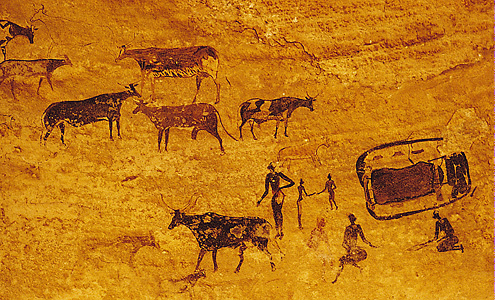
About 200 B.C., the Romans helped a Berber chieftain named Massinissa form and become ruler of the Kingdom of Numidia in northern Algeria. From 46 B.C. to the A.D. 600’s, the area was controlled, in turn, by the Romans, the Vandals, and the Byzantines.
Arab conquest.
During the A.D. 600’s, Arabs from the Arabian Peninsula began to invade much of northern Africa, including Algeria. This invasion resulted in the spread of Arabic culture throughout northern Africa and into what is now Spain. In Algeria, most of the Berbers adopted Islam—the religion of the Arabs—and, in time, the Arabic language. In addition, many Arabs and Berbers intermarried.
Ottoman rule.
During the early 1500’s, Spanish Christians captured Algiers and other Algerian coastal cities. But in 1518, Barbarossa, a Turkish sea captain, gained control of Algiers. He later helped drive the Spanish from most other Algerian coastal areas. Barbarossa joined the areas under his control to the Ottoman Empire, an Islamic empire based in what is now Turkey. Algeria remained a part of the empire until the early 1800’s. During that time, ships in the Mediterranean Sea were attacked by private warships under the command of corsairs from Algeria and other countries. Raids by Algerian corsairs on the ships of other nations became Algeria’s chief source of income.
French rule.
In 1830, France invaded and gained control of northern Algeria. The French king, Charles X, hoped an overseas military victory would strengthen his rule in France. The French governed Algeria as part of France. Many French and other Europeans settled in Algeria. These settlers became known as colons. Non-French colons were given French citizenship. However, France made it very difficult for Muslims to become French citizens, even though Muslims made up the great majority of the Algerian population. France gave the colons large amounts of Algerian tribal land, and the colons soon controlled Algeria’s economy and government. Many native Algerians fought against French rule. In 1847, the French defeated powerful rebel forces led by Abd al-Qadir, a Muslim religious leader. By 1914, France controlled all of what is now Algeria.
As subjects of France, many Algerians fought on the Allied side during World War I (1914-1918). During World War II (1939-1945), Algeria became a battleground. In 1940, France surrendered to Germany. France, cooperating with Germany, formed a government at Vichy in central France. The Vichy government ruled Algeria until 1942, when the United Kingdom, the United States, and other Allied countries invaded and occupied Algeria (see World War II (The Tunisia Campaign)). After the war, the Allies returned control of Algeria to France.
The Algerian Revolution.
After both world wars, native Algerians demanded greater political power. But each time, the colons blocked all reforms that would have given native Algerians a voice in the government in proportion to their population. As a result, many native Algerians began to call for freedom from French rule.
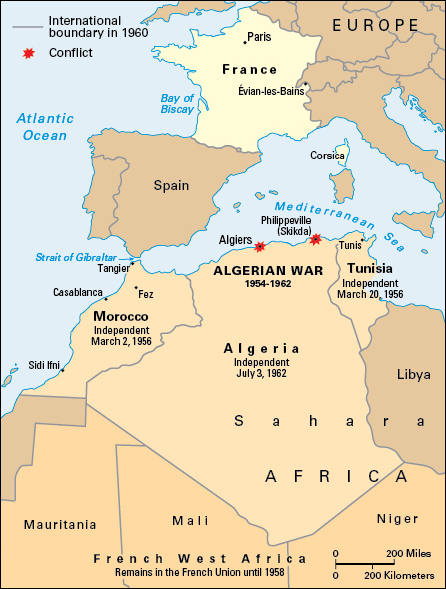
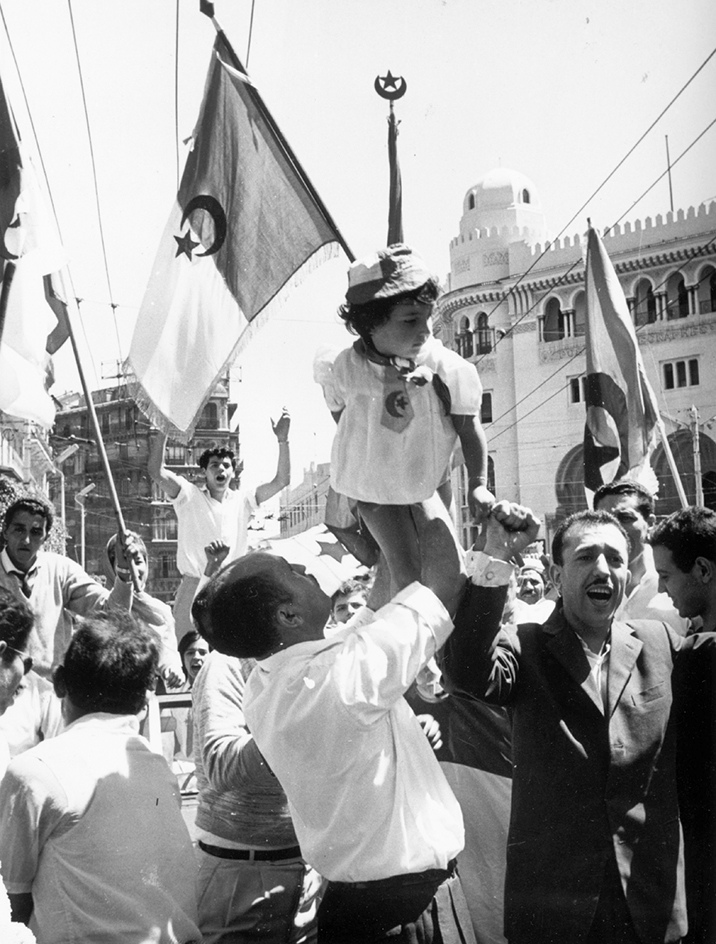
Independence.
Most colons—about a million of them—fled Algeria during or soon after the revolution. In 1963, one of the rebel leaders, Ahmed Ben Bella, became Algeria’s first president. Ben Bella proclaimed Algeria a socialist state and urged workers to take over businesses and farms abandoned by colons.
In 1965, Houari Boumedienne, the army commander, overthrew Ben Bella. Boumedienne began a program of rapid economic development based on government ownership and control of industry. He used income from natural gas and petroleum to build fertilizer plants, steel mills, oil refineries, and other factories.
Boumedienne died in 1978. In 1979, Defense Minister Chadli Bendjedid was elected president. He slowed industrial development to devote more resources to the production of agricultural and consumer goods. He was reelected in 1984. After a severe economic crisis led to widespread protests and rioting in October 1988, Bendjedid introduced a number of reforms. He was reelected president in December 1988.
From independence until 1989, the FLN was the only political party allowed by Algeria’s Constitution. But a 1989 revision permitted any number of parties to operate. However, the main opposition party, the Front Islamique du Salut (FIS)—or Islamic Salvation Front—claimed that changes in the electoral law favored the FLN. In 1991, many Algerians staged violent protests in favor of the FIS.
In December 1991, the FIS won a clear majority of seats in a first round of elections for the National People’s Assembly. To prevent an FIS victory, the government canceled a second round of elections scheduled for January 1992. The government then dissolved the Assembly, and President Bendjedid resigned. A military-dominated High State Committee then governed Algeria until 1994, when the committee was replaced by a president, Liamine Zeroual. In 1995, Zeroual was elected president in a multiparty election.
The courts banned the FIS in 1992, and thousands of FIS members were arrested Violent protests escalated into a bloody civil war between the government and fundamentalist Islamist groups led by the FIS and the Groupe Islamique Armé (GIA), or Armed Islamic Group. The GIA staged numerous terrorist attacks on government troops and facilities. Beginning in late 1997, the GIA killed hundreds of foreigners and Algerian civilians in a number of brutal massacres. In June 1999, the FIS made peace with the government, but GIA violence continued sporadically for years
Recent developments.
In 1996, the Algerian people approved a revised constitution that bans political parties based on race, religion, sex, language, or regional differences. Multiparty elections for the National People’s Assembly were held in June 1997. The National Democratic Rally won the most seats in the elections. In 1999, Abdelaziz Bouteflika, an independent candidate supported by the military and Zeroual, was elected president in a presidential contest marred by charges of vote fraud. Bouteflika was reelected in 2004 and 2009.
In 2001, violent clashes broke out between security forces and Berber protesters in northern Algeria. The protesters demanded greater political and cultural recognition for Berbers. The government agreed to some Berber demands. In 2002, for example, the government made the Berber language, Tamazight, a national language of Algeria.
Antigovernment protests erupted in Algiers and other cities in 2011. The protesters called for greater political freedom and criticized President Bouteflika. The unrest followed similar events in Tunisia, Egypt, and elsewhere in the region.
In 2013, about 30 terrorists of the militant group al-Qa`ida in the Islamic Maghreb (AQIM) took hundreds of people hostage at a natural gas plant in eastern Algeria. Many of the captives were foreign workers from the United States, the United Kingdom, France, Japan, and elsewhere. Algerian troops stormed the plant, killing or capturing all the terrorists. However, about 40 of the hostages were killed by the terrorists or in the battle to free them.
Bouteflika was reelected president in 2014, despite having had a stroke that impaired his mobility and speech. In early 2019, protests broke out when he sought a fifth term in office. He resigned in April. Abdelkader Bensalah, the chairman of the upper house of parliament and an ally of Bouteflika, was named interim president. But protesters continued to demand a new government that was no longer dominated by the former ruling elite.
In December 2019, voters elected a former prime minister and housing minister, Abdelmadjid Tebboune, as Algeria’s new president. Protesters denounced Tebboune’s ties to Bouteflika and his allies. Tebboune promised constitutional reform. In a November 2020 referendum, despite record low turnout, voters approved the reforms. The reforms gave the prime minister and parliament greater governmental powers. Tebboune signed the new constitution into law in January 2021.
